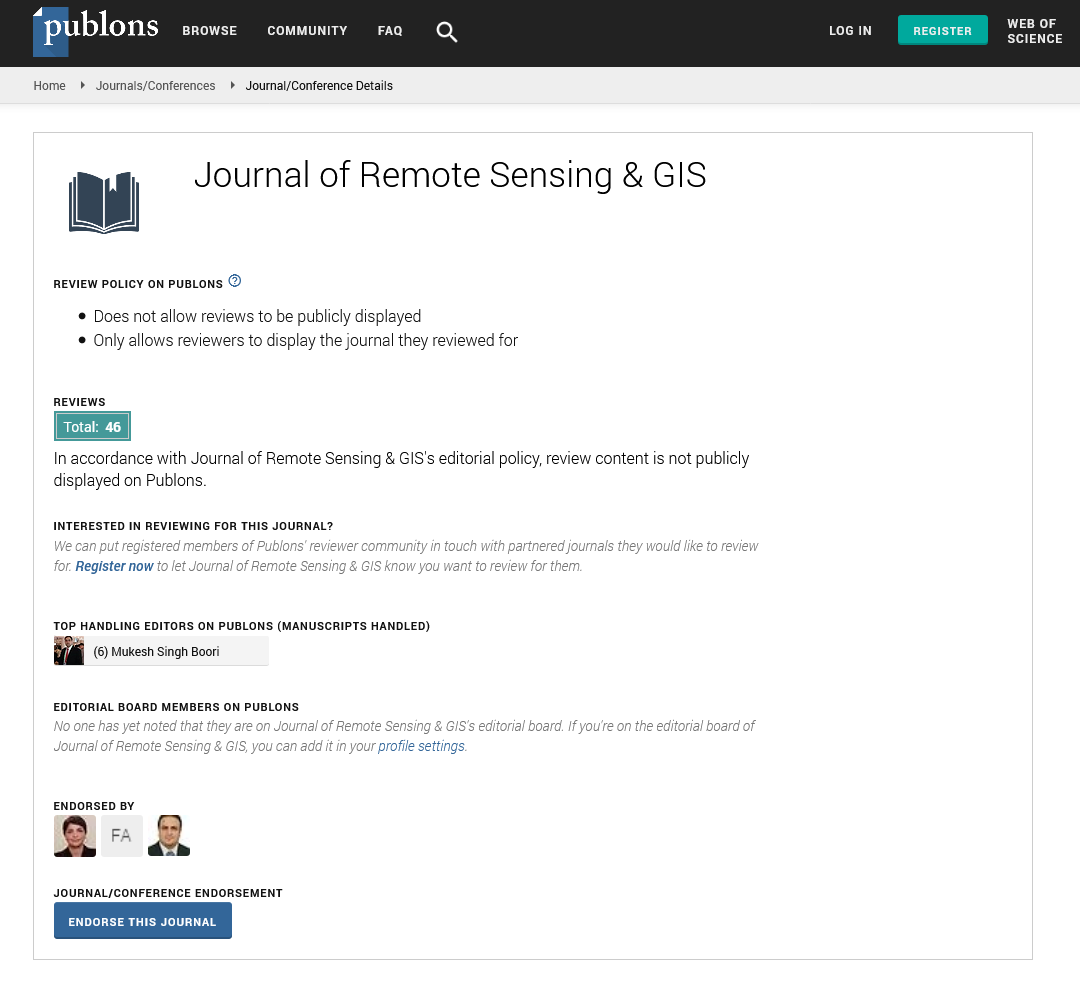Indexed In
- Open J Gate
- RefSeek
- Hamdard University
- EBSCO A-Z
- OCLC- WorldCat
- Publons
- International Scientific Indexing
- Euro Pub
- Google Scholar
Useful Links
Share This Page
Journal Flyer

Open Access Journals
- Agri and Aquaculture
- Biochemistry
- Bioinformatics & Systems Biology
- Business & Management
- Chemistry
- Clinical Sciences
- Engineering
- Food & Nutrition
- General Science
- Genetics & Molecular Biology
- Immunology & Microbiology
- Medical Sciences
- Neuroscience & Psychology
- Nursing & Health Care
- Pharmaceutical Sciences
Abstract
Geographic Information System (GIS) for the Management of Electricity Distribution Assets and Infrastructure
Okwuchukwu Nwaka* and Sogunro M. S
The distribution of electricity to end users in most urban areas are faced with diverse spatial problems particularly due to the use of analogue facility management system. Based on this, the study seeks to demonstrate the effectiveness of geospatial technique for the management and maintenance of electricity distribution assets and infrastructure of a section of the Enugu Metropolis, Enugu State, Nigeria. It also assesses the spatial relationship between Electricity Distribution Company (EDC) assets and their customer’s connectivity in the study area. Data sourcing include collection of primary data where ground survey method was deployed through the use of handheld GPS for X, Y, positioning of these assets as well as direct interview of people within the study area and secondary data regarding feature attributes were collected from appropriate authorities, while a geo referenced satellite imagery was acquired, from which buildings and roads were extracted. GIS technique; ArcGIS v.10.1, was used for database creation and design from which series of spatial analysis such as queries and buffer were performed to solve a specific spatial problem relating to the electricity facilities within the study area. The study/analysis showed that buildings on particular phases can be disconnected during load shedding operation to minimize the load on transformer and also, buildings falling outside 300 m radius from the transformer may experience a drop in voltage compared to those within the buffered area. We recommended that the EDC’s needs to employ GIS specialists to assist in the maintenance of their spatial data infrastructure in order to obtain a utility information system so as to proffer answers to some generic questions about fault detection and management of electricity facilities.
Published Date: 2024-07-29; Received Date: 2020-03-16

